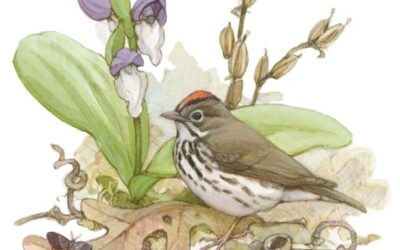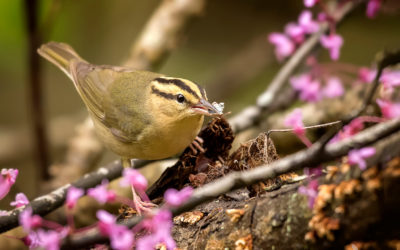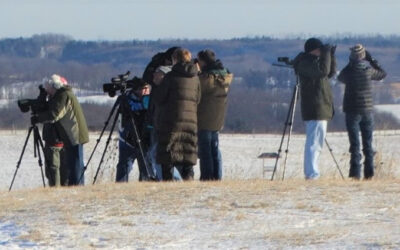Documenting Rare Birds
Methods of Documentation
Photographs, especially with convenient modern methods yielding images far more informative than before, have emerged as one of the best ways of documenting the occurrence of wild birds. Nowadays, a birder can carry in a shirt pocket a film or digital camera that in combination with standard field optics can result in photographs that, even if they aren’t works of art, can contribute greatly to the verification of a rare species. Video recordings, too, can sometimes be extraordinarily helpful. The OBRC recommends that serious birders always carry some handy method of procuring photographic evidence of a rarity.
Field drawings, even rudimentary ones, can often be vital in evaluating a record. It is worth learning even the basics of sketching a bird for this purpose, but even a caveman- style attempt at illustrating important features can make a difference.
Audio tape recordings can be vital to confirming species, especially those whose calls and songs differ significantly, but which look alike. Observers should always try to procure a tape recording of vocalizing birds when identification by sight alone is problematic.
Write out details in full. Even with superb photos, sharp drawings, and audio tapes, written details are essential. Written details will always include the essential data of date, time, weather and light conditions, equipment relied upon, other observers, etc., but they can also convey important information that cannot be expressed in any other way—impressions of shape, behavior, etc., or subtleties of color, tone, and so on that would be missed by photos, audio tapes, and other mechanical methods.
Every time we use a birding reference—a field guide, a range map, a checklist, a journal article, even a hot-line report of a rare species, we are benefiting from the work of others who have worked to record carefully their field observations for the rest of us. We owe them a great debt, and if we are fortunate we sometimes get chances to repay it. You can visit Report a Rare Bird Sighting link and complete the OOS online form or print and send the Rare Bird Documentation form.
Sharing Unusual and Rare Sightings
Further, accurate details reported on each observed individual of any scarce species—its age, sex, state of molt, any bands or dyeing, even peculiarities in behavior or plumage—help in assessing its local numbers and distribution, or its origin. The presence of two emerging white tail feathers—noticed and documented by several observers—in the tail of a first-winter mew gull found in early 1998 at Fairport Harbor, for example, helped to confirm that only a single individual was present.
Part of the excitement of birding comes when we find something unusual, something rare or unexpected we can relish and share with others. Reports of rarities, when they can be authenticated and published, help to fill out the total picture of our local avifauna, and are still more important than the thrill of pointing a bird out to others. As records, they can help us all to recognize habitats, regions, or seasons in which scarce species are most likely to be found.
Documenting Helps You Become a Better Birder
Documenting our observations can sometimes seem like a chore, but remember that it may be impossible to judge the significance of reports until a lot of information is collected and analyzed. We may have something important to contribute without realizing it at the time. Inevitably, we will make mistakes, but we can profit from the comments of others, and if we miss something we’ll know more about how to look for certain details in the future. It sometimes happens that documentation that could not be accepted at one time is later accepted when new evidence comes to light; once in a while two sets of documentation that by themselves are not sufficient to verify a species are, when combined, acceptable verification. For example, a 1998 fourth state record of a Townsend’s solitaire at Killdeer Plains was made possible only by considering two different documentations, neither of which could be accepted independently.
Some feel reluctant to send in documentation of a sighting because they feel an analysis of the material might involve an excessively critical view of their birding skills. One’s reputation, however, can only be enhanced by one’s willingness to help. While knowing that reporters are acknowledged experts can add weight to their reports (and experts have the heaviest responsibility to document rarities well, since they are skilled in describing what they observe), being relatively unknown will never by itself detract from anyone else’s report.
Rare Bird Sighting?
News & Events
Warblers & Wildflowers Weekend 2025
Registration is now open! Warblers and Wildflowers Weekend 2025 (April 25-27) at Shawnee State Park
SAVE THE DATE: Warblers & Wildflowers: April 25-27 2025
Mark your calendars and reserve a room for Warblers and Wildflowers at Shawnee State Park: April 25-27, 2025. Registration will open in late January.
2025 Winter Raptor Extravaganza at The Wilds!
Join the OOS for the 2025 Winter Raptor Extravaganza at The Wilds: January 18, 2025



